- With standard equipment
- With safety pack
Find more information in the General Comments section of the assessment
Find more information in the Rating Validity tab of the assessment
- See More
- See More
- See More
- See More
- Good
- Adequate
- Marginal
- Weak
- Poor
 Rear Seat
Rear Seat
 Front Seat
Front Seat
- Good
- Adequate
- Marginal
- Weak
- Poor


Passenger
outboard
center
Fitted to the vehicle as standard
Not fitted to the test vehicle but available as option
Not Available
-
i-Size CRS
-
ISOFIX CRS
-
Universal Belted CRS
Easy
Difficult
Safety critical
Not allowed
| Seat Position | ||||
|---|---|---|---|---|
| Front | 2nd row | |||
| Passenger | Left | center | Right | |
| Maxi Cosi 2way Pearl & 2wayFix (i-Size) | ||||
| Maxi Cosi 2way Pearl & 2wayFix (i-Size) | ||||
| BeSafe iZi Kid X2 i-Size (i-Size) | ||||
| Britax Römer TriFix2 i-Size (i-Size) | ||||
| BeSafe iZi Flex FIX i-Size (i-Size) | ||||
| BeSafe iZi Combi X4 ISOfix (ISOFIX) | ||||
| Cybex Solution Z (ISOFIX) | ||||
| Maxi Cosi Cabriofix (Belt) | ||||
| Maxi Cosi Cabriofix & Easyfix (Belt) | ||||
| Britax Römer King II LS (Belt) | ||||
| Cybex Solution Z (Belt) | ||||
Easy
Difficult
Safety critical
Not allowed
In both the frontal offset test and the side barrier test, good protection was provided to all critical body areas of both the 6 year and 10 year dummy, and maximum points were scored in this part of the assessment. The front passenger airbag can be disabled to allow a rearward-facing child restraint to be fitted in that seating position. Clear information is provided to the driver regarding the status of the airbag and the system was rewarded. All of the child restraint types for which the car is designed could be properly fitted and accommodated in the car.
- Good
- Adequate
- Marginal
- Weak
- Poor

Head Impact 18.1 Pts
Pelvis Impact 5.9 Pts
Leg Impact 6.0 Pts
| System Name | Front Assist | ||
| Type | Auto-Brake with Forward Collision Warning | ||
| Operational From | 5 km/h | ||
| PERFORMANCE | | |||
-
Cyclist from nearside, obstructed view
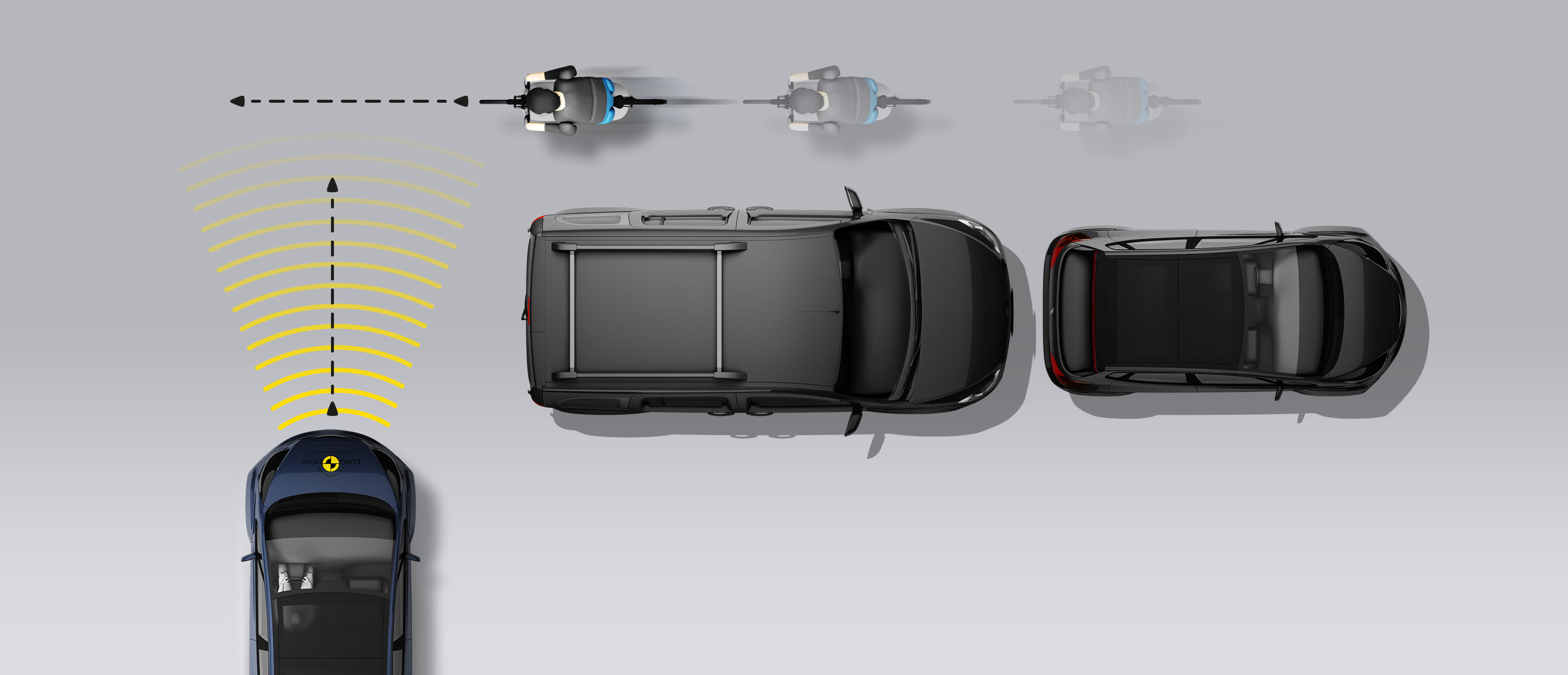
-
Approaching a crossing cyclist
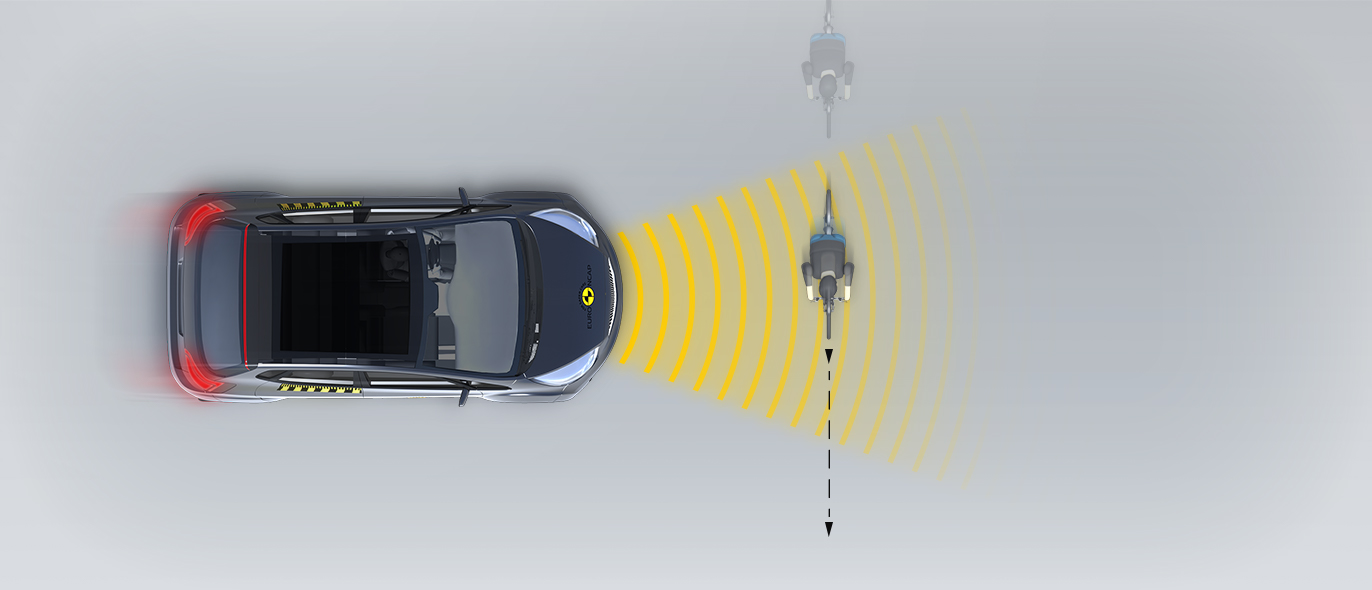
-
Cyclist along the roadside

The protection provided to the head of a struck pedestrian was good or adequate over most of the bonnet surface, with some poor results recorded only on the stiff windscreen pillars. The bumper provided good protection to pedestrians' legs at all test locations. Protection of the pelvis was good or adequate at all points tested by Euro NCAP. The autonomous emergency braking (AEB) system can detect pedestrians and cyclists. In tests of its response to such vulnerable road users, the system performed adequately, avoiding or mitigating collision in most test scenarios. The system cannot detect pedestrians to the rear of the car and AEB-reverse tests were not performed.
- Good
- Adequate
- Marginal
- Weak
- Poor
| System Name | Speed Assist |
| Speed Limit Information Function | Camera & Map, subsigns supported |
| Speed Control Function | System advised (accurate to 5km/h) |
| Applies To | Front and rear seats, including third row | ||
| Warning | Driver Seat | Front Passenger(s) | Rear Passenger(s) |
| Visual | |||
| Audible | |||
| Occupant Detection | |||
|
|||
| System Name | Driver Alert System |
| Type | Steering inputs |
| Operational From | 60 km/h |
| System Name | Lane Assist |
| Type | LKA and ELK |
| Operational From | 60 km/h |
| Performance | |
| Emergency Lane Keeping | |
| Lane Keep Assist | |
| Human Machine Interface | |
| System Name | Front Assist | |||
| Type | Autonomous emergency braking and forward collision warning | |||
| Operational From | 5 km/h | |||
| Sensor Used | camera and radar | |||
A speed assistance system is fitted as standard. This uses a camera and digital mapping to determine the local speed limit and the driver can choose to allow the system to adjust the speed automatically. A seatbelt reminder is standard for all seating positions. A fatigue-detection system monitors driver alertness and issues a warning if impaired driving is detected. Lane assistance warns the driver if the car is drifting out of lane and gently corrects the vehicle path. The system also intervenes more aggressively in some more critical situations. The AEB system performed well in tests of its response to other vehicles, with collisions avoided or mitigated in almost all scenarios.
- Specifications
- Safety Equipment
- Videos
- Rating Validity
Specifications
Tested Model Volkswagen ID.4, rear drive, LHD
Body Type - 5 door SUV
Year Of Publication 2021
Kerb Weight 2029kg
VIN From Which Rating Applies - all VW ID.5s
Class Small SUV
Safety Equipment
Note: Other equipment may be available on the vehicle but was not considered in the test year.
Fitted to the vehicle as standard
Fitted to the vehicle as part of the safety pack
Not fitted to the test vehicle but available as option or as part of the safety pack
Not available
Not applicable
Videos
Rating Validity
Variants of Model Range
| Body Type | Engine & Transmission | Model Name | Drivetrain | Rating Applies | |
|---|---|---|---|---|---|
| LHD | RHD | ||||
| 5 door SUV | Electric | Pure | 4 x 2 |  |
 |
| 5 door SUV | Electric | Pure Performance | 4 x 2 |  |
 |
| 5 door SUV | Electric | GTX | 4 x 4 |  |
 |
Tested variant: Volkswagen ID.4, rear drive

Find more information in the General Comments section of the assessment
The Volkswagen ID.5 is, in all ways related to safety, identical to the ID.4, tested by Euro NCAP in 2021. Accordingly, the results of the ID.4 apply equally to the ID.5 and its rating is carried over.
 Share
Share
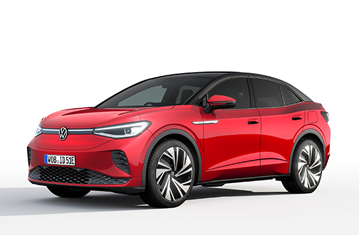
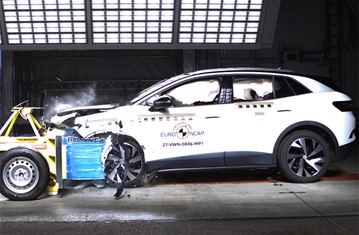
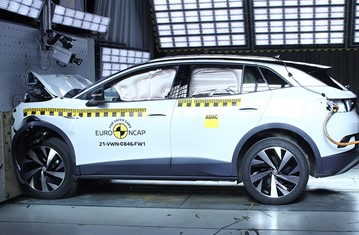
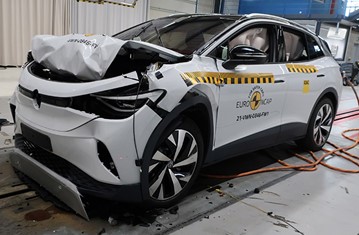
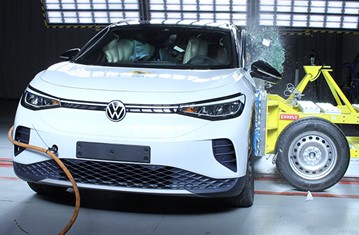
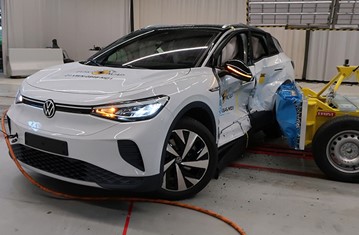


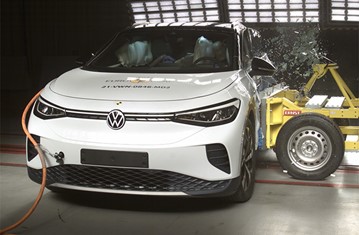








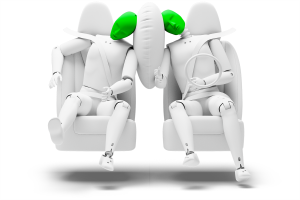
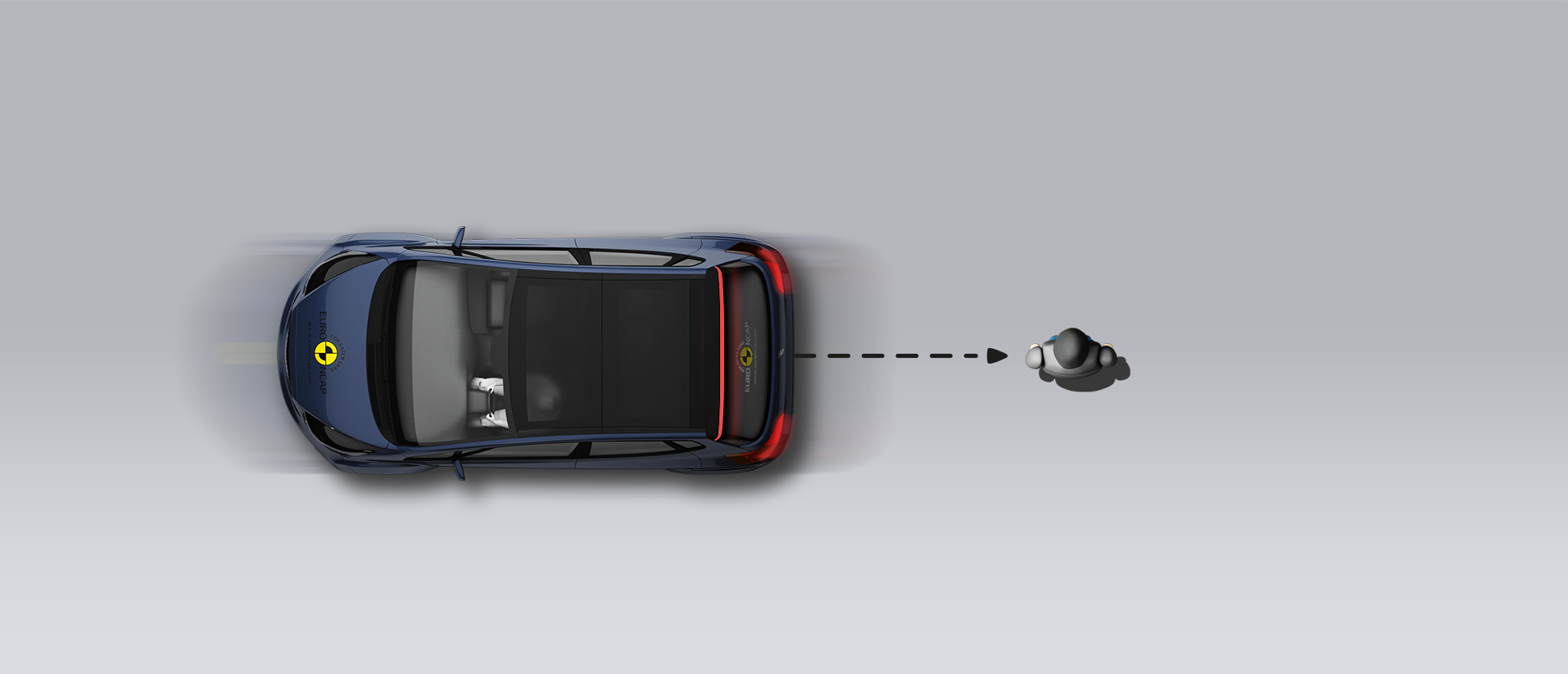
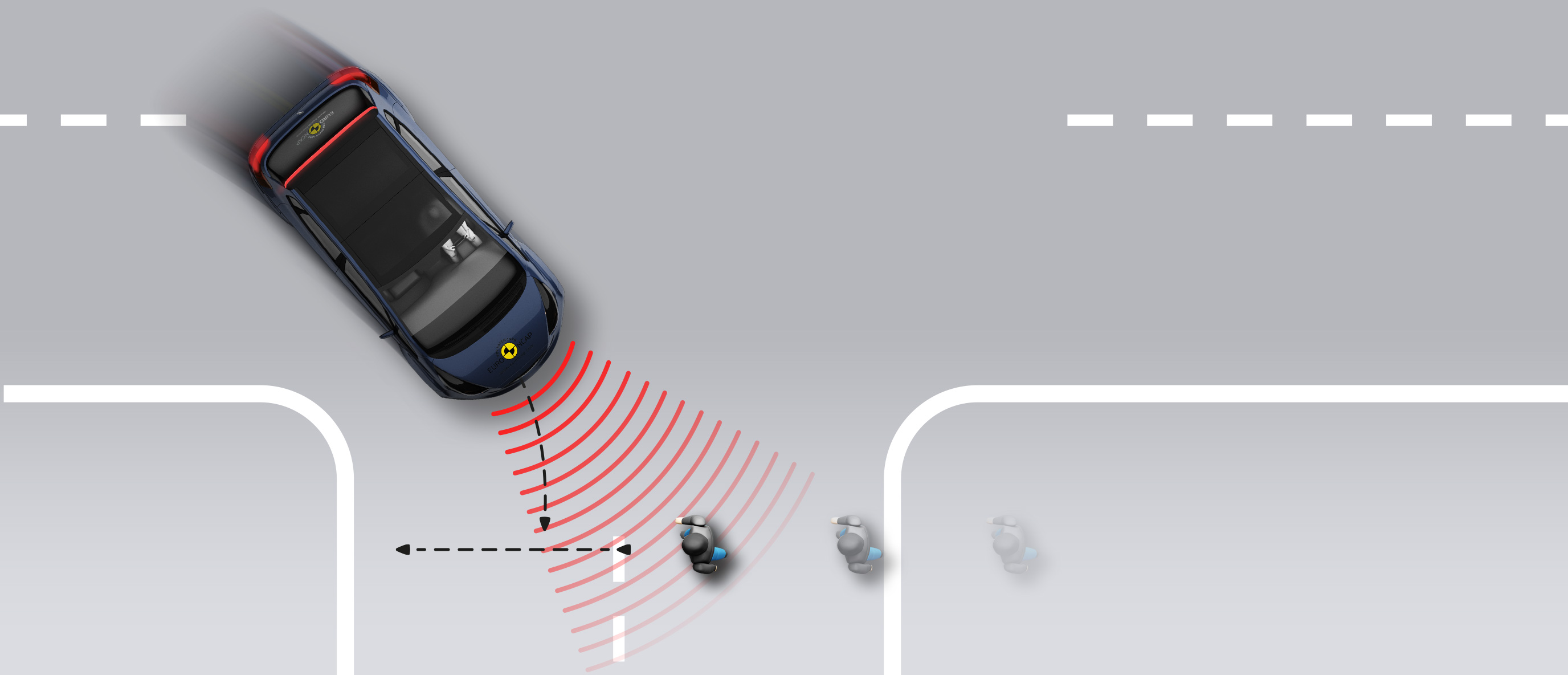

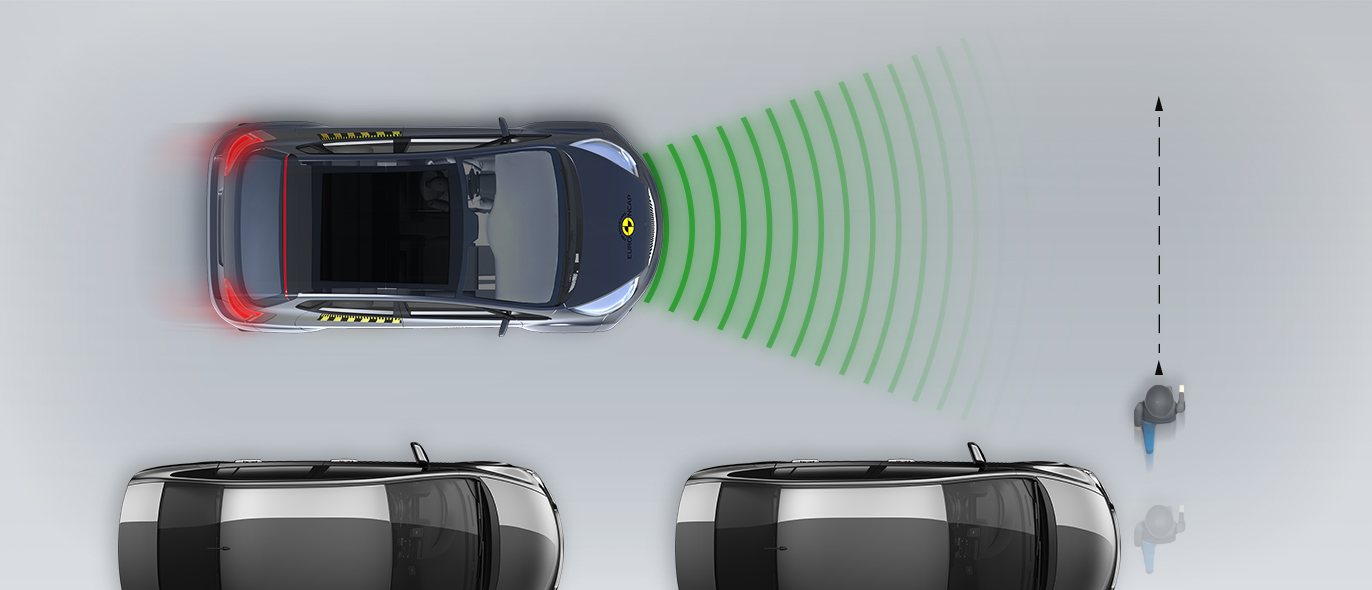



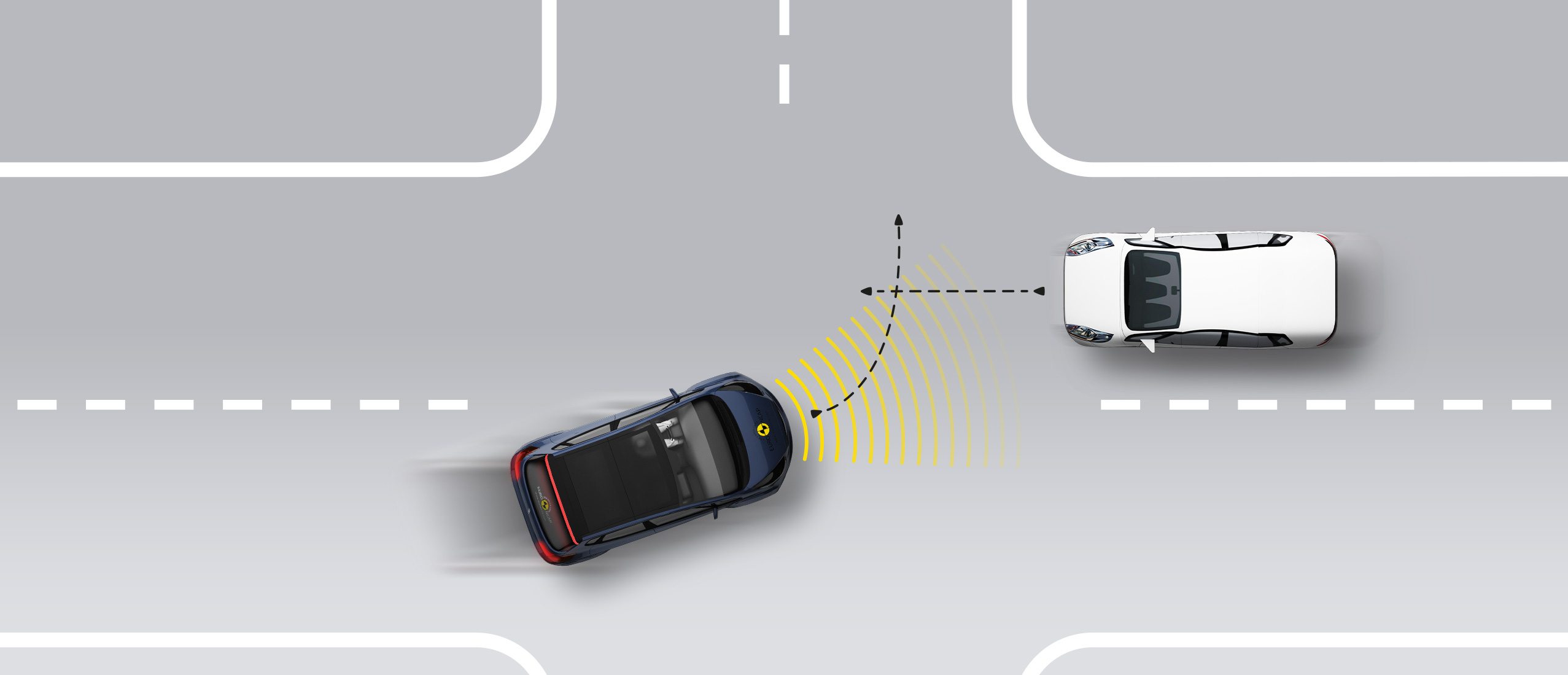








The passenger compartment remained stable in the frontal offset test. Dummy readings showed good protection or adequate for all critical body regions of the driver and passenger. VW showed that good protection would be provided also to the knees and femurs of occupants of different sizes and to those sitting in different positions. Analysis of the deformable barrier used in the frontal offset test revealed a small area of high deformation. However, the deceleration profile of the trolley on which the barrier was mounted showed that the car would not be an aggressive crash opponent. In both the side barrier and side pole tests, the car provided good protection to all critical body regions and scored maximum points. Occupant excursion in a far-side impact was rated as weak. A centre-mounted airbag protects the driver and front passenger from hard mutual contact in the event of a side crash. Euro NCAP's test showed that the airbag offers good protection for the heads of the front occupants. Tests on the front seats and head restraints demonstrated good protection against whiplash injuries in the event of a rear-end collision. A geometric analysis of the rear seats also indicated good whiplash protection.